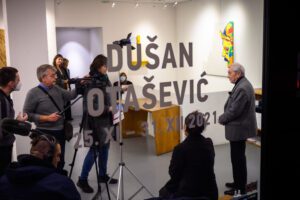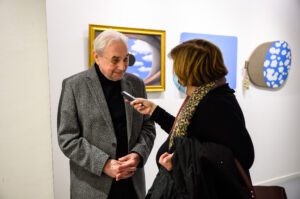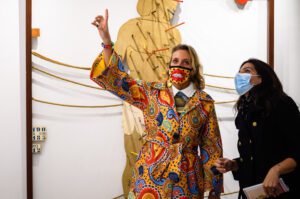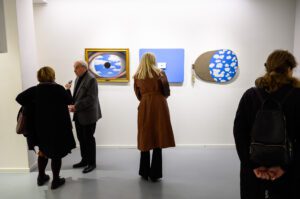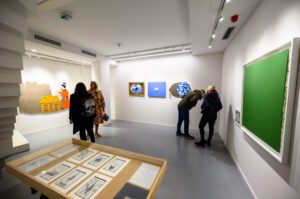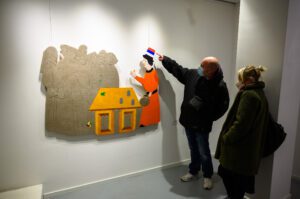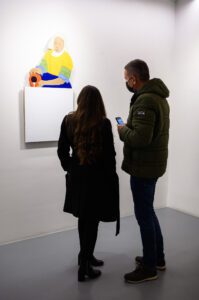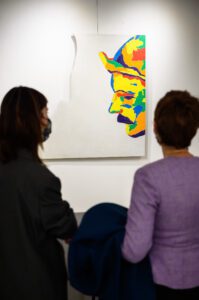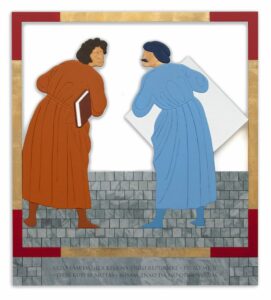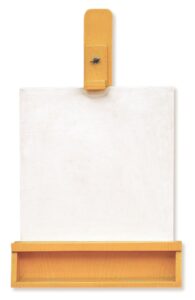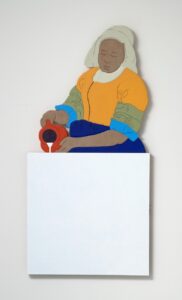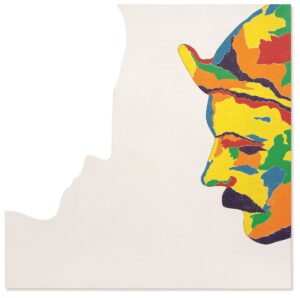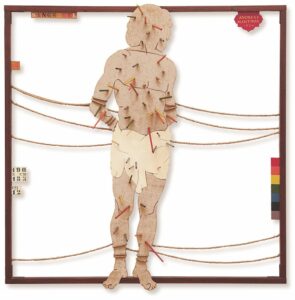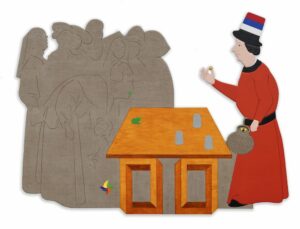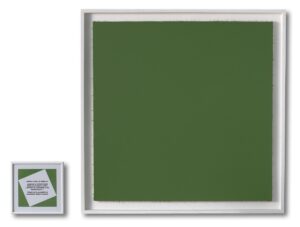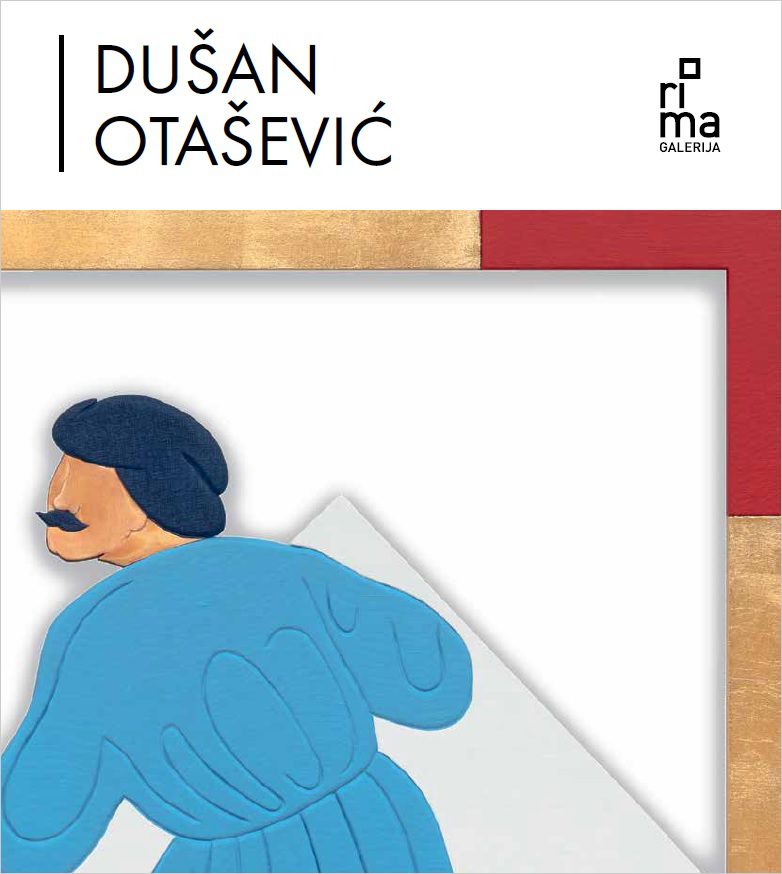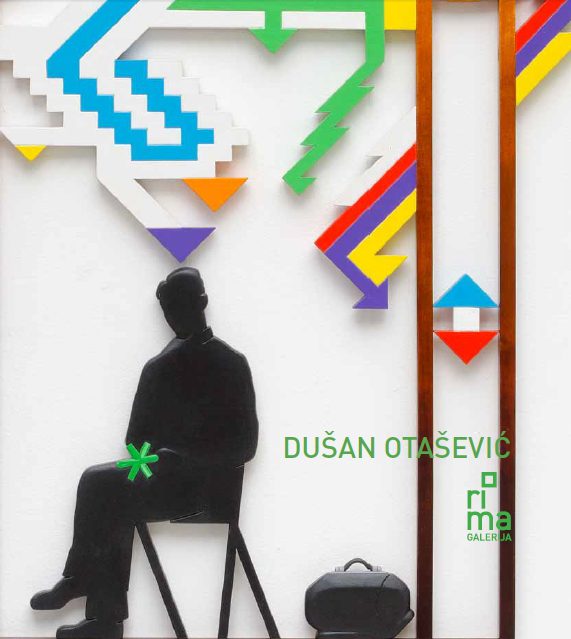Nevena Martinović
DUŠAN OTAŠEVIĆ IN THE „ART HISTORY“ SHOPPING MALL
When he quoted for the first time a motif from a work of art history – Mantegna’s St. Sebastian – for his solo show in Gallery Sebastian in Dubrovnik, in 1975, Dušan Otašević stood then at the initial development of the postmodernist model of appropriation in Serbian art. What afterwards, in the 1980s, became a customary artistic practice within the current linguistic and conceptual pluralism – quotations, pastiche, copies, as models of appropriation of different elements (motifs, styles, entire works) from the body of art history – already occupied the constitutive place in Otašević’s production from mid-seventies to his latest works from 2021.
This adoptive relationship to artistic past grew out of the already established and developed model of appropriation that the artist had previously applied to objects from everyday reality. In the first phase of his creative activity (between 1965 and approximately 1972) Otašević’s adoptive procedure was targeted at artefacts from his social environment – among other things, to signboards over artisans’ shops, embroidered kitchen wall decorations, propaganda political portraits or festival decorations, flags and road signs, as well as objects related to everyday behaviour and habits, such as cigarettes or confectionary products. Consciously selected as non-artistic and banal, utilitarian or serially produced as consumer goods, these objects signified in Otašević’s works an opening of art “to the concrete world, as it is” contrary to the fictional worlds of the artists’ “imposed vision”, born in the secrecy of their studios. It was the appropriation of the world in the same broad context in which the American and British Pop-art or European new realism and new figuration embraced elements of popular and consumer culture in their works. Therefore, his art, placed within the context of Belgrade new objectness in the 1960s, was more precisely defined as closest to Pop-art tendencies along transparent differences and specific qualities of the artist’s creative procedures. Otašević rarely used ready-made objects, such as toilet-seat (Sea, sea, 1966), clyster (My Heart is Tearing Apart when I Hear the Bugle, 1967) or fashion dummies; the majority of his objects, made from wood, relates to the quotational strategy – the form of objects, stylistic or iconographic elements were repeated with difference, such as supernaturally enlarged match stick (Obelisk, 1965), recycled models of propaganda public decorations (Comrade Tito, our Violet White, the Young Adore You as their Light, 1969), the combined existing visual codes from the broadest public sphere (Towards Communism on Lenin’s Course, 1967), the use of cartoon-strip method of narration, etc. The phenomenon of appropriation was the language of “’conversation’ between art and everyday material reality” through which the art commenced its “conversation” with itself in the second phase of Otašević’s opus.
In 1989 Otašević introduced for the first time the term “reworkings by Otašević”; at the very beginning it was related to those works in which he used paintings from art history “from without, as a framework for another content”. The object of the same title which begins this open group of works, shows the iconic Self-portrait of Leonardo da Vinci painted over with a wall-painter’s brush by a small girl whose figure had been taken from a Victorian advertisement. The can with paint bears a label with her figure multiplied almost endlessly. Unburdened with wise men from the museums’ past, open to serial production and recycling, the artist takes over fragments from artistic and diverse other pasts and reworks them into something new – those are the essential determinants of Otašević’s creative approach and method. The fact that the traces of paint screen off but do not erase Da Vinci’s drawing, reveals the postmodernist position that art no longer has utopian revolutionary tasks, does not tend to renounce the old in order to create something radically new, but more readily accepts the existing state and uses it for its own communication. In that communication Otašević’s specific term of “reworking”, the term self-imposed in the clash between Otašević’s artistic credo and the reality of Yugoslav everyday in the years of crises, when the lack of diverse products brought solutions in various contrivings and reworkings – from reworking of old clothes to meat products. “The term ‘reworking’ itself possesses for me the necessary ambiguity in our language”, said the artist on one occasion, adding that very soon the term proved to be the top covering of his overall creative activity: “Now, when I look backwards, it seems to me that the majority of my works has always been a kind of reworking.”
(Complete text in printed edition)
